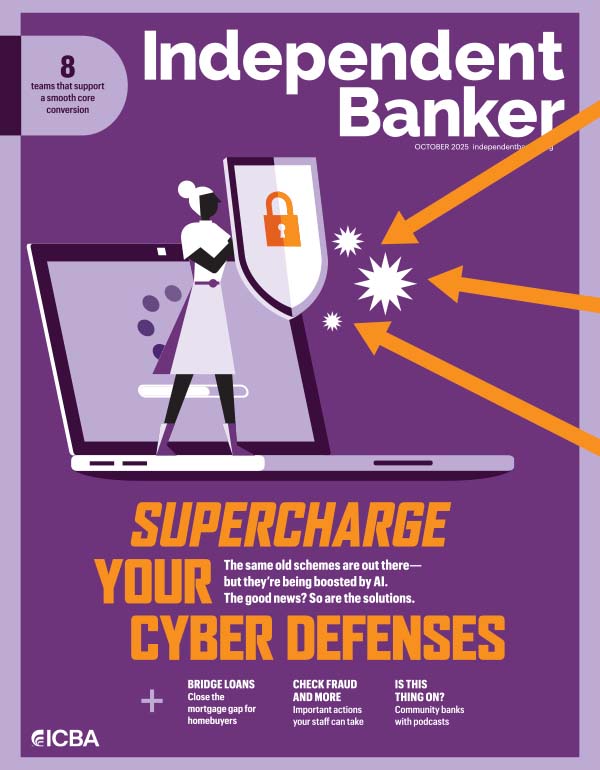Banking-as-a-service (BaaS). Faster payments. Cryptocurrency. Central bank digital currency (CBDC). A barrage of new payments potential has shaped the market since the start of the pandemic. In fact, 45% of U.S. consumers have shifted to digital channels for retail product purchases since COVID-19 hit, and close to 16% currently own or have previously owned some form of cryptocurrency, according to PYMNTS.com.
The financial services industry is acting on this digital demand, incorporating fintech solutions, instant payments offerings and crypto banking products. For example, enabled by application programming interfaces (APIs), many community banks are embracing fintech solutions. In fact, one in five community banks had deployed APIs before 2020 and another quarter planned to do so this year, a 2020 Cornerstone Advisors survey found. And faster payments volume continues to climb, with The Clearing House reporting that its Real-Time Payments (RTP) Network is accessible to 70% of all demand deposit accounts (DDAs) in the U.S.
On the cryptocurrency front, the Federal Reserve has demonstrated progressive thinking, unveiling a discussion paper this summer “with a particular focus on the possibility of issuing a U.S. central bank digital currency.”
This flurry of activity reveals only the tip of the payments iceberg, and it may leave community bankers pondering what product development needs to happen today—and what can wait.
“With headlines just constantly coming out, it’s so critical for bankers to look to the resources that are available to them to help them filter out the noise,” says Brian Laverdure, vice president of payments and technology policy at ICBA. “What are the things that matter most to them? Those answers are going to come in from those deep relationships that community bankers have with their customers.”
The customer connection
As community banks hone their payments strategies in support of new innovations and market demands, returning to the core of what their customers need will help guide them in the right direction.
“The customer drives everything,” Laverdure says. “Community banks at their heart are really relationship managers; they know their customers better than anyone. It all just goes back to what are you hearing from your customers.”
Yet sometimes the messages customers convey can be conflicting or complicated. That’s when experts recommend assembling an internal team to evaluate customer feedback and provide input on new innovations. This group would be charged with monitoring the payments landscape and convening on a regular basis to make decisions on how and when it’s time to evolve the community bank’s payments strategy.
In Wausau, Wis., $1.7 billion-asset IncredibleBank instituted a core payments planning team to help position it for the future. The team focused its payments strategy on four key points: arenas or payments channels where the bank will be active; vehicles to get there; speed to market; and differentiators that will support its success. This payments strategy “diamond” has provided the team with a filter through which to evaluate new developments.
“For us, payments became a key focus at the start of 2019,” says Kathy Strasser, IncredibleBank’s executive vice president, chief operating officer and chief information officer. “We built a strategic plan that gave us a good guidepost of where to go next. That’s why this past year, even in the midst of COVID, it’s things like RTP, Zelle, card controls and others that we moved forward with.”
For banks looking to deepen their payments focus, resources like ICBA Bancard’s Payments Strategy Tool can help sort through the chief considerations. Offering a neutral assessment of where banks are today and where they need to be, this online resource may help community bank leaders determine top priorities.
“To avoid shiny-object syndrome, ensure you have a solid process for project approvals.”—Kathy Strasser, IncredibleBank
Prepare to pivot
Beyond that foundational start, IncredibleBank advises creating internal procedures that speak to the specifics of product development. “To avoid shiny-object syndrome, ensure you have a solid process for project approvals,” Strasser says. “Require the project owner to build the business case, including how it ties to your vision and strategic objectives for the year, how will it improve the customer experience, and/or how it will generate income for the bank.”
With a ripped-from-the-headlines velocity, today’s payments landscape continues to shift. For community banks, that means that even with a strong strategy in place, they need to remain nimble enough to evolve as the market—and their customers dictate.
“The industry and competitors are moving quickly,” Strasser says, “so be prepared to pivot as necessary.”
Dive into payments trends
Want to know about the latest payments discussions? Here are a few recent Independent Banker articles to read:






